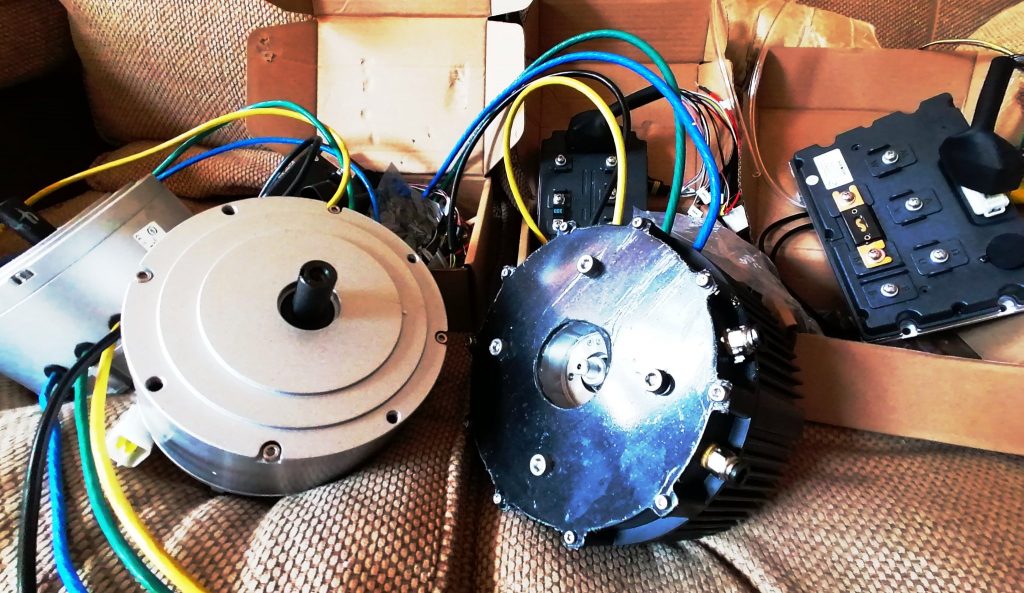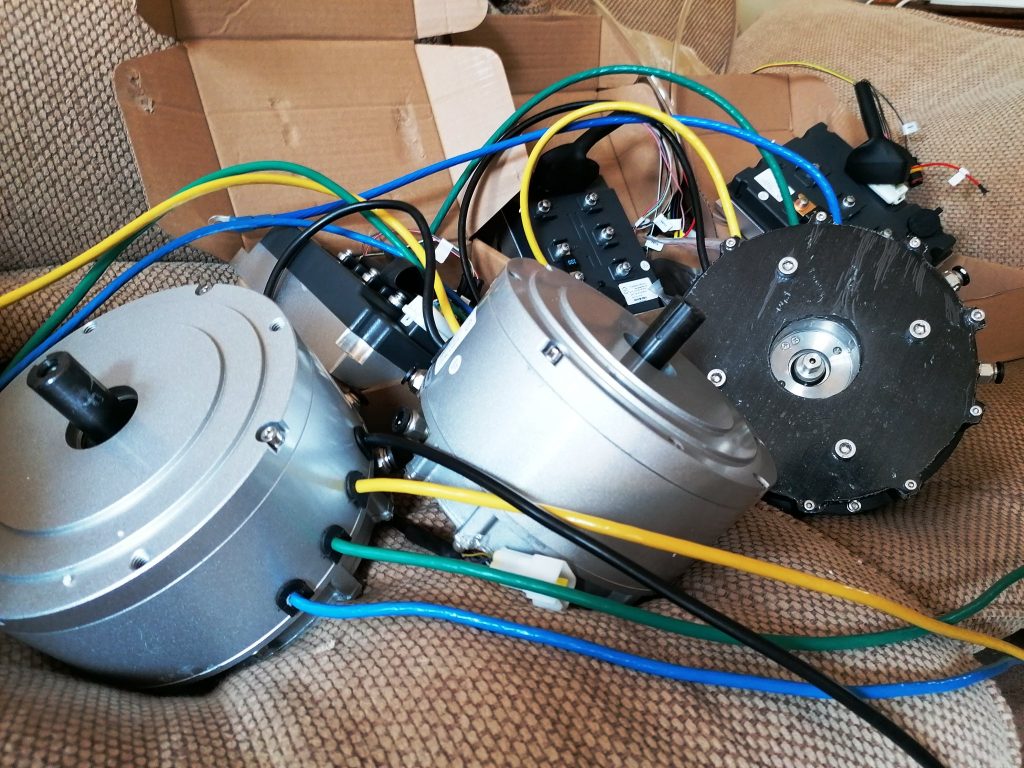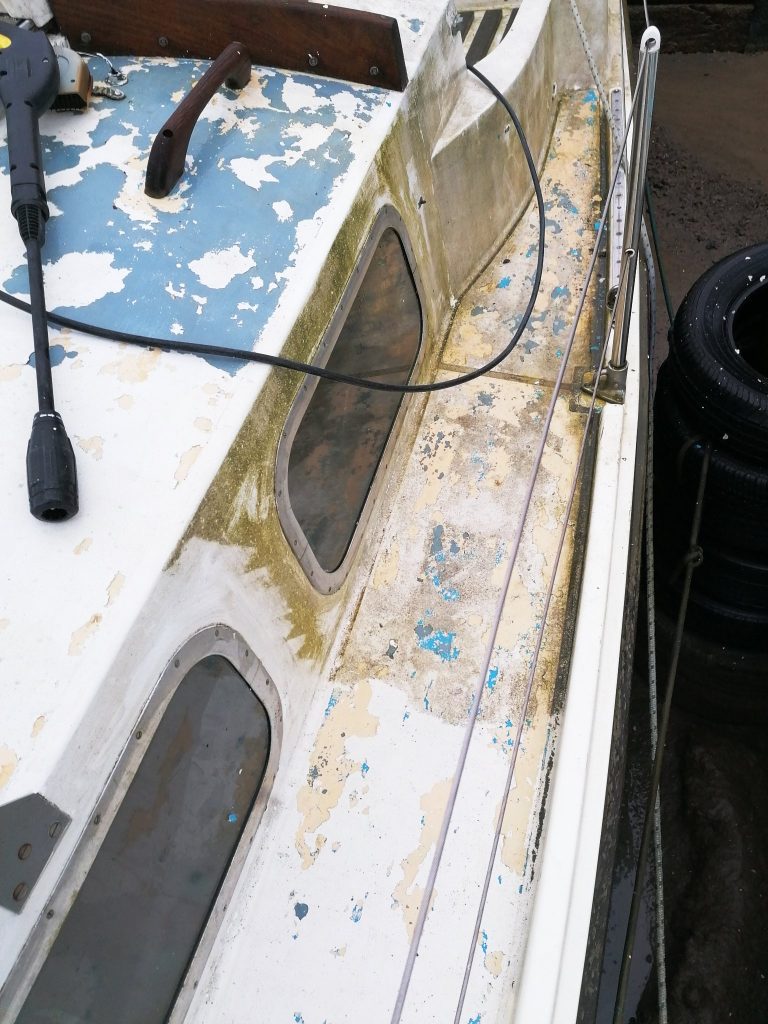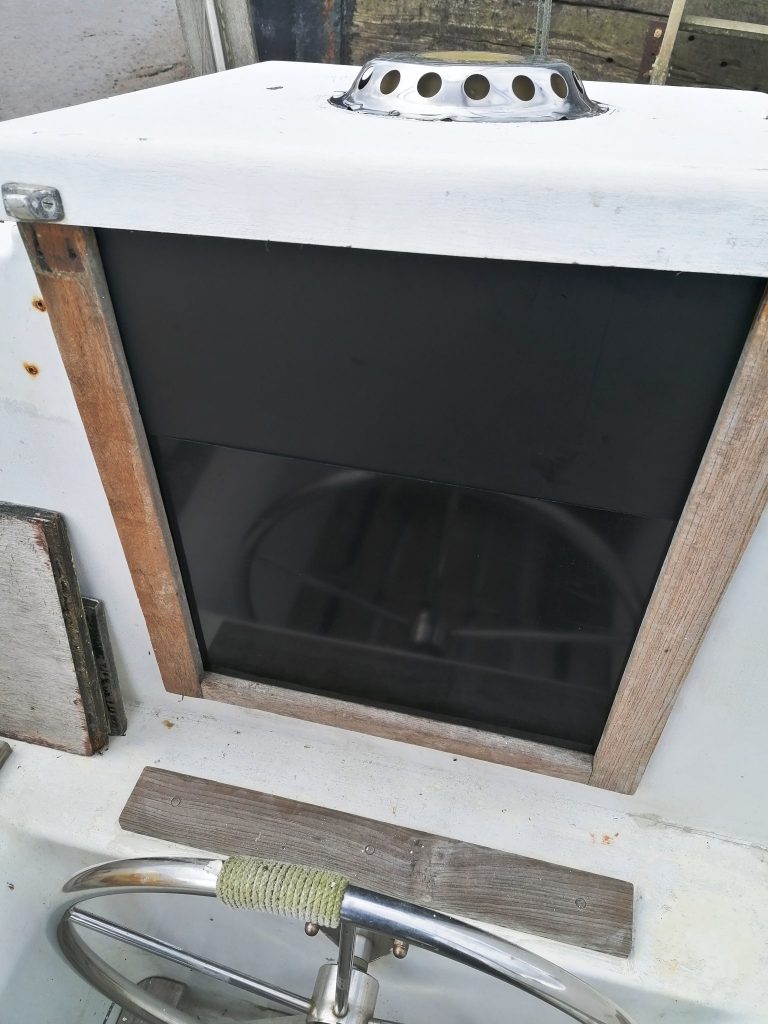So.
Bits have arrived.
Exciting times!
I’ve opted for a 5kW motor; she’s around 3.5-4.0 tonnes, reasonably streamlined below the waterline, and (largely) won’t need to travel that fast. Anything faster than 5kts will start sucking the power; I’d err on the side of planning properly and not needing to rush. Add to that, most propulsion will be by sail.
For weekend use (at most) with a decent solar capacity that should give a decent charge in the gaps between use (I’m erring between 300-500W, that’s easily achievable in the space available). When she moves onto a swinging mooring, there will be the option of regen from the tidal stream, too, which will be a similar amount (if my calcs are right!). Need to avoid heating or cooking off the main battery banks, though, for this to work.
The diesel that typically inhabits a boat like this is 10-15hp (7.5-12kW) so this “feels” underpowered; but when you compare with other similar conversions, and look at the torques required on the prop shaft, it’s actually about right (I hope!). The difference is because that old diesel lump rotates at quite a different speed to the electric motor, and is run at partial throttle almost all the time. I may be sacrificing the ability to shake the boat to bits, but (a) this is almost never needed, (b) the diesel at this load point is pretty inefficient, and (c) the electric motor can significantly over-deliver for the short term (testing data on the 5kW motor I’ve gone for suggests 8kW output is totally achievable for short runs).
I’ve therefore gone with liquid cooled; the one thing I don’t want is overheating. I’ve also gone with significantly over-specified wiring and connections for the same reasons…
Another design decision, for this one, is to use 48V rather than higher voltages. The Low Voltage Directive would enable me to use 72V with no additional applicable regs (but not the 96V option) and the motor performs better. But that means more batteries, and that’s the pricey bit. So by sticking with 48V, I can install and test on a cheaper battery (and charging) setup, which will have (known) limits. I will be going LiFePO4 batteries (I expect) but rather than dropping several grand on a system I don’t know will perform how I expect it to, I’ve saved (rather a lot) on a temporary set of lead-acid batteries, which will be upgraded once the rest of the system is working how it should.
As an aside, one thing that’s surprised me is the cost of the wires, terminals, and “joining bits”. Anyone doing similar, don’t overlook these, it’s more than you’d think!
And finally, I‘m sure some bright spark has noticed there’s a few too many motors and controllers. In for a penny, in for a pound: I’m also going to convert my other boat – another 26 foot 3.5-4.0 tonne fibreglass hull, but this one a Freeman 26 on the river Thames. Twin screw, and a less efficient hull form (displacement hull with a flat transom) but on the Thames there’s never a need to plug a strong current or go any speed. So 2 off 3kW motors should be plenty. Batteries and solar will need to be bigger for this one, but the temporary setup described above should get me to any of the 3 local pubs and back… Plus, of course, it gives me the option of switching motors between boats, if they don’t perform as expected!




